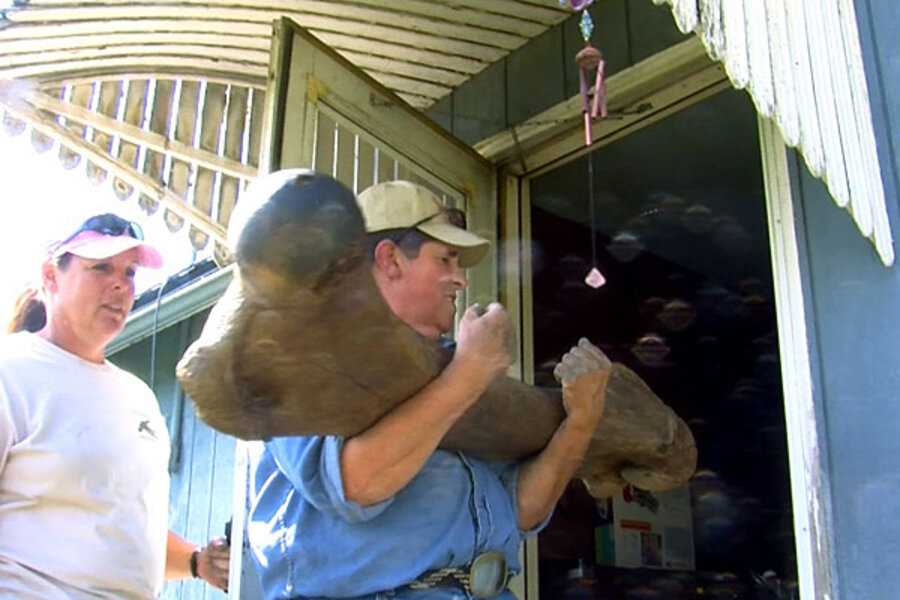Iowa farmer makes mammoth discovery ... of a mammoth!
Loading...
| Oskaloosa, Iowa
Scientists are excited about the discovery of a nearly complete mammoth skeleton that was found buried on an Oskaloosa farm, saying such finds are rare and can yield clues about life in the area thousands of years ago.
The bones found about 60 miles southwest of Des Moines were largely undisturbed, which has allowed scientists to gather evidence that could help show what the area was like more than 12,000 years ago when the animal died. Those excavating the site have already collected pollen grains, seeds, a spruce pine needle and other plant material from the site.
"A find of this size is quite rare because it looks like we have a lot of the animal rather than just a single bone here and there," said Sarah Horgen, education coordinator for the University of Iowa Museum of Natural History, which is overseeing the excavation.
"What's important to the university is looking at the environmental context that we can recover as part of this excavation, looking at what Iowa was like at the end of the last ice age," she said.
A number of tests for carbon, nitrogen and oxygen isotopes can reveal such details as when the animal died, its diet, and even the temperature of the water it was drinking, said Holmes Semken, a retired paleontologist and professor emeritus at the University of Iowa's Department of Geoscience.
He said the site includes an abundance of material valuable to scientific study.
It appears the mammoth died and decayed on the surface because some of the bones have rodent gnaw marks and a rib shows gnawing by a fairly large carnivore.
Excavating such a site is a slow process. The discoveries so far have been located after about six feet of digging. The site goes as deep as 30 to 40 feet, Semken said.
Excavation will continue throughout the summer. The next dig is scheduled for June 16.
A group of scientists plans to scan the area with ground penetrating radar on Friday to see if they can determine how much of the mammoth remains underground. It's an experiment by the geology department to see if the radar can detect bone underground, Semken said.
Semken said the landowner and his sons discovered the bones two years ago. They saw what turned out to be a 4-foot-long leg bone protruding from a creek bed. The bone at the knee joint was about the size of a soccer ball, and further digging revealed bones from the animal's foot and neck.
He said the landowner asked not to be identified in order to keep the site's location confidential.
"The geological location for this thing is just ideal," Semken said. "He's very excited about the kind of science we'll get out of it and he fully realizes the value of what we have."
The site also has become an invaluable teaching tool, said Mahaska County Conservation Board Naturalist Laura DeCook.
She teaches about nature and the outdoors in schools throughout the county and has assisted at the dig site.
"Information I learn from the people coordinating the dig can be used in the classroom and in providing classroom materials for us eventually," DeCook said.
She said the local teachers and students also have been invited to help dig at the site.
DeCook said digging is like putting together pieces of a puzzle.
"Piece by piece we can put together the whole picture of what life was like thousands of years ago," she said. "To find something that has existed this long is fascinating. It gives us clues to what the ecosystem was like at the time our own state. It's a neat history that doesn't come from a book, it's hands on."







